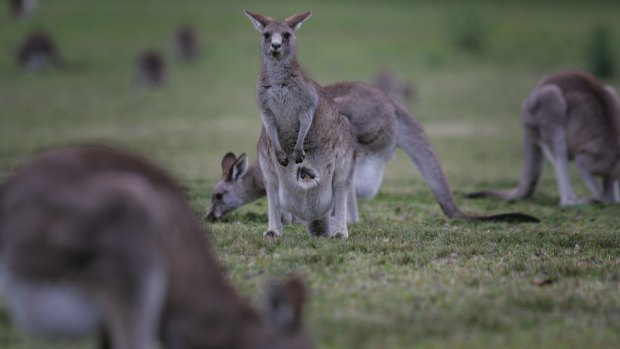This was published 8 years ago
Roos used to improve human joint implants in QUT study
The quality of human joint implants could take a giant leap forward thanks to the kangaroo.
Queensland scientists are studying kangaroo shoulder cartilage because it's similar to that of humans. They say the research will enhance knowledge about implants for shoulders and potentially other joints in people.

Kangaroos could help research on human joint implants.Credit: Dean Osland
The improved implants would help relieve the pain of cartilage worn out by age, arthritis or injury.
There has been little research into the complex make-up of human shoulder cartilage as most focus has been on the knee, which bears more weight.
Queensland University of Technology (QUT) PhD student Namal Thibbotuwawa said it was difficult to get human tissue from the shoulder so an alternative was needed.
"We chose the kangaroo because humans are biped (two-footed) and kangaroos are, in a sense, biped," he told AAP.
Kangaroos, like humans, use their arms for grabbing, punching and lifting, although their range of movement is more limited.
They are also of comparable size and have similar shoulder joints.
QUT's Professor Yuantong Gu is leading the research.
"Cartilage is a complex tissue with a number of key components - we need to find out what their roles and properties are and then we can try to replicate them," he said.
"We want to provide the fundamental knowledge needed to develop artificial implants with enhanced biomechanical properties to relieve the pain of degraded shoulder joints and restore mobility."
AAP